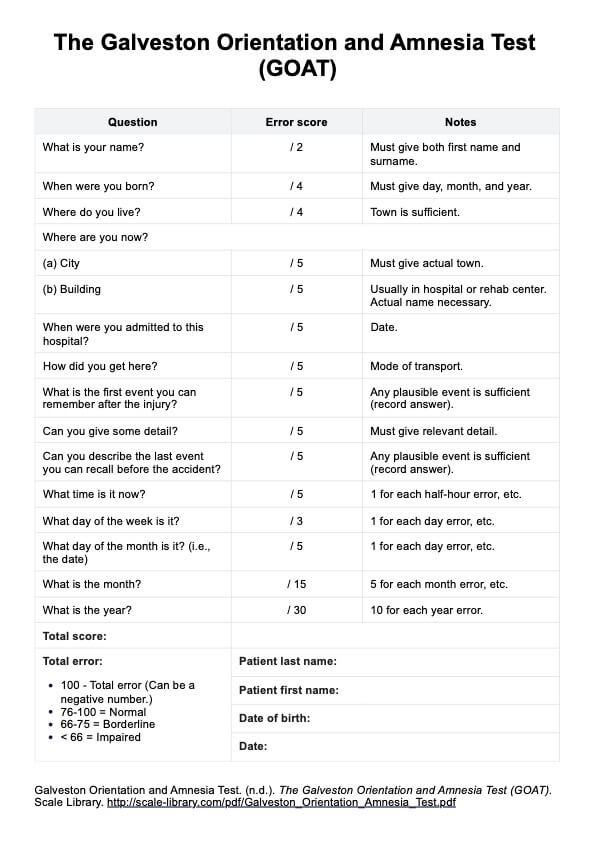Common symptoms include headaches, dizziness, confusion, and light sensitivity. More severe symptoms include loss of consciousness and cognitive impairments.

Galveston Orientation and Amnesia Test (GOAT)
Learn more about the Galveston Orientation and Amnesia Test (GOAT), a critical tool in assessing post-traumatic amnesia and cognitive function following brain injury in patients.
Use Template
Galveston Orientation and Amnesia Test (GOAT) Template
Commonly asked questions
PTA is diagnosed through cognitive assessments like the GOAT, which evaluates orientation and memory.
Recovery time varies based on the severity of the injury, ranging from a few days to several months or longer for severe cases.
EHR and practice management software
Get started for free
*No credit card required
Free
$0/usd
Unlimited clients
Telehealth
1GB of storage
Client portal text
Automated billing and online payments











